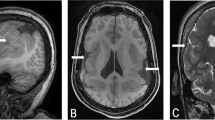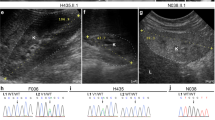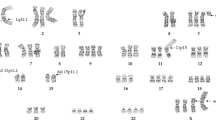Abstract
The precise chromosomal localization of the type II renal-specific Na+ -phosphate (Pi) contransporter (NPT2) gene (gene symbol SLC17A2) is necessary for the identification of closely linked polymorphic markers to determine whether NPT2 is a candidate gene for inherited disorders of renal Pi reabsorption. Recent studies by two different groups localized NPT2 to human chromosome 5q35 and 5q13, respectively. To resolve this discrepancy, we used three independent methods. The results using a human chromosome 5/rodent somatic cell hybrid deletion panel, fluorescence in situ hybridization with a PAC clone containing the NPT2 locus, and analysis of a chromosome 5-specific radiation hybrid panel were all consistent with the 5q35 assignment of the NPT2 gene. The radiation hybrid results placed NPT2 between polymorphic microsatellite markers D5S498 and D5S469. These findings will allow the initiation of linkage analysis to determine if NPT2 has a causative role in Mendelian disorders of renal Pi wasting.
Similar content being viewed by others
Main
The mammalian kidney is an important arbiter of extracellular phosphate(Pi) homeostasis. Renal reabsorption of filtered Pi occurs predominantly in the proximal tubule where concentrative Na+-gradient dependent Pi transport across the brush-border membrane is the rate limiting step in the overall Pi reabsorptive process and the major site for its regulation(1, 2). Recently, homologous cDNAs encoding high affinity, renal-specific, brush-border membrane Na+-Pi cotransporters (NPT2 type, Genome Data Base symbol SLC17A2) were cloned from several mammalian species(3–6), thereby providing useful probes to study the regulation of renal NPT2 gene expression and determine whether NPT2 is a candidate gene for Mendelian disorders of renal Pi reabsorption(7, 8).
We demonstrated that renal NPT2 gene expression is significantly reduced in X-linked Hyp mice, a murine homologue of human X-linked hypophosphatemia(9). We also showed that the NPT2 gene maps to human chromosome 5q35(10) and mouse chromosome 13B (X. Zhang, H. S. Tenenhouse, A. S. Hewson, H. Murer, and P. Eydoux, manuscript submitted for publication) by FISH, using the corresponding NPT2 cDNAs as probes. These findings indicate that mutations in NPT2 are not responsible for the homologous human and murine X-linked hypophosphatemias and suggest that the gene at the X-linked hypophosphatemia (Hyp) locus is involved in the regulation of renal NPT2 gene expression. A candidate gene for X-linked hypophosphatemia has recently been identified(11).
To determine whether NPT2 is a candidate gene for autosomal disorders of renal Pi wasting(7, 8), polymorphic markers mapping close to the NPT2 gene on chromosome 5q35(10) are required for linkage analysis. However, the application of this approach has been complicated by a second report which localized the NPT2 gene to human chromosome 5q13(12). The present study was undertaken to resolve this discrepancy. We used NPT2-specific primers to PCR amplify genomic DNA from a panel of human-hamster somatic cell hybrids which either contain or lack DNA in regions q13 and q35 of chromosome 5(13, 14) and a panel of chromosome 5 radiation hybrids (J. D. McPherson, unpublished data). In addition, we identified polymorphic microsatellite markers that flank the NPT2 locus on human chromosome 5 using the radiation hybrid panel and confirmed the localization of the NPT2 gene to chromosome 5q35 by FISH using an NPT2 genomic clone as probe.
METHODS
Deletion panel mapping. NPT2-specific oligonucleotide primers(forward 1405: 5′-CCGCTCACACTGGGTTCCAA-3′; reverse 1667: 5′-AGTGAGGGCAGCAGCAGGAA-3′) were used to amplify DNA isolated from somatic cell hybrids obtained from a chromosome 5 deletion panel(13, 14). The NPT2 primers are numbered according to their position in the NPT2 cDNA [NaPi-3 in(3)]. The PCR amplification conditions were 1.5 mM MgCl2, 0.4 μM of each primer, 200 μM of each dNTP and 1 unit of Taq polymerase(Boehringer Mannheim) with the supplied buffer. The PCR cycling parameters were 94 °C, 3 min (94 °C, 30 s/64 °C, 5 s/72 °C, 30 s) × 33; 72 °C, 7 min with an MJ Research PTC200 Thermocycler. PCR products and DNA Molecular Weight Marker VI (Boehringer Mannheim, Indianapolis, IN) were separated on 6% acrylamide gels.
Radiation hybrid mapping. NPT2-specific oligonucleotide primers(forward 618: 5′-GGAGGTGAGCTCTGCCATC-3′; reverse 764: 5′-CAGTTAAAGCAGTCATGCACC-3′) were used to amplify DNA isolated from 180 chromosome 5-specific radiation hybrids (J. D. McPherson, unpublished data). PCR conditions were essentially the same as above with the following cycling parameters: 94 °C, 1 min (94 °C, 30 s/60 °C, 30 s/72°C, 30 s) × 35; 72 °C, 10 min. PCR products and DNA Molecular Weight Markers (Boehringer Mannheim) were separated on 3% agarose gels and the hybrids scored for the presence or absence of the NPT2 locus. The position of NPT2 relative to previously ordered chromosome 5 markers was determined using the rh2pt and RHMAXLIK programs with the SAVMAX value of the latter set to 8(15).
FISH. A human PAC clone (203K6) containing the NPT2 locus was isolated from an arrayed library (generously provided by Pieter de Jong) using the NPT2-specific primers (forward 618 and reverse 764) described above. DNA from the PAC 203K6 clone was direct labeled with fluorescein-dUTP (Prime-It Fluor, Stratagene, La Jolla, CA) as recommended by the supplier and hybridized to human metaphase chromosomes, and images were collected as previously described(16). Over 30 metaphase spreads were examined.
RESULTS
Figure 1 depicts the results of PCR amplification of DNA isolated from a human chromosome 5 natural deletion panel, selected from human/hamster somatic cell hybrids(13, 14). An NPT2 PCR product of the expected size (962 bp) was generated with DNA from all cell lines containing the distal portion of the long arm of chromosome 5(HHW105, HHW1064, HHW1421, HHW1499, and HHW1600) but not with DNA from HHW1138, a cell line lacking the region of interest (Fig. 1). These findings localize NPT2 to 5q33.2-qter. Moreover, the demonstration that a PCR product was obtained with DNA from HHW1064, a cell line lacking the 5q13 region (Fig. 1), indicates that NPT2 does not map to this locus as reported by Ghishan et al.(12). No PCR product was detected in negative controls run in the absence of DNA or in the presence of hamster (UCW56) DNA (Fig. 1). A PCR product of the expected size was obtained with human (46XY) DNA as template (Fig. 1).
Regional mapping of NPT2 by PCR amplification of DNA from a panel of human-hamster somatic cell hybrids. Solid lines below the lanes indicate the portion of human chromosome 5 present in the indicated hybrids. The PCR conditions were 1.5 mM MgCl2, 0.4 μM of each primer(forward 1405: 5′-CCGCTCACACTGGGTTCCAA-3′; reverse 1667: 5′-AGTGAGGGCAGCAGCAGGAA-3′), 200 μM of each dNTP and 1 unit of Taq polymerase (Boehringer Mannheim). The PCR cycling parameters were 94 °C, 3 min; (94 °C, 30 s/64 °C, 5 s/72 °C, 30 s)× 33; 72 °C, 7 min with an MJ Research PTC200 thermocycler. PCR products were separated on 6% acrylamide gels. Visible fragments of 2176 and 1766 bp (doublet), 1230, 1033, 653, and 517 bp were obtained with DNA Molecular Weight Marker VI (Boehringer Mannheim).
Radiation hybrid mapping was performed by PCR analysis using NPT2-specific primers and DNA isolated from 180 chromosome 5-specific radiation hybrids. The hybrids were scored for the presence or absence of the NPT2 locus by the presence or absence of a 269 bp NPT2 PCR product. The position of NPT2 was determined relative to 248 markers previously ordered on human chromosome 5 by radiation hybrid mapping (J. D. McPherson, unpublished data). The NPT2 locus was localized between D5S498 and D5S469 using the RHMAXLIK program(15) at a log likelyhood > 10E-3. The calculated distance between NPT2 and D5S469 was 32.2 centiRays (cR) and between NPT2 and D5S498 was 65.9 cR, with associated LOD scores of 16.02 and 8.08, respectively. Calibration of the chromosome 5 radiation map, using both the chromosome size and sequence-tagged sites generated from the end clones of an 850-kb YAC, yielded an approximate value of 40 kb/cR, in agreement with that of a previous study(17). Thus, NPT2 is estimated to be 2.6 Mb distal to D5S498 and 1.3 Mb proximal to D5S469. The known localization of the dinucleotide repeat markers D5S498 and D5S469 to distal 5q is consistent with the data from the chromosome 5 deletion mapping panel shown in Figure 1.
The localization of NPT2 to human chromosome 5q35 was also confirmed by hybridization of human metaphase chromosomes with fluorescein-labeled, denatured genomic DNA from a human PAC clone (203K6) containing the NPT2 locus(data not shown). The genomic probe hybridized only to the q35 region of chromosome 5. Of all chromosomes examined with hybridization to 5q35, greater than 90% showed a signal on both chromatids. No signal was observed on any other chromosome.
DISCUSSION
We demonstrate by three independent methods that the gene encoding the high affinity, renal-specific brush-border membrane Na+-Pi cotransporter (NPT2, gene symbol SLC172A) maps to human chromosome 5q35. The methods include PCR amplification of genomic DNA from a panel of human-hamster somatic cell hybrids that either lack or contain DNA in regions 5q13 and 5q35(13, 14) and a chromosome 5 radiation hybrid panel(J. D. McPherson, unpublished data), using NPT2-specific primers. In addition, FISH was performed with an NPT2 genomic clone as probe. The present findings are consistent with our previous mapping data in which a human NPT2 cDNA was used as a probe for FISH(10). We suggest that the localization of NPT2 to chromosome 5q13(12) was likely the result of nonspecific hybridization (only nine cells of 50 examined gave a positive signal)(12). Moreover, improper chromosomal assignment may have occurred since hybridization was not performed directly on banded chromosomes(12).
Using the radiation hybrid panel, we were able to confirm the localization of NPT2, to position NPT2 relative to other chromosome 5 loci, and to identify flanking polymorphic microsatellite markers D5S498 and D5S469. These data provide a basis for linkage analysis to determine whether the Na+-Pi cotransporter is a candidate gene for several autosomal disorders of renal phosphate wasting(7, 8).
The NPT2-specific primers used in the present study were designed from the cDNA sequence(3). Each of the NPT2-specific primer pairs spans an intron, generating a PCR product that is larger than that expected from the cDNA sequence. The size of NPT2 introns was derived by cloning and characterization of the human NPT2 gene(18). Primer pairs “forward 618/reverse 764” and “forward 1405/reverse 1667” amplify introns 6 and 12 which are 122 and 700 bp, respectively(18). Because NPT2 is renal-specific and not expressed in white blood cells or skin fibroblasts, a knowledge of the intron/exon boundaries of the NPT2 gene is necessary for mutation analysis of the NPT2 coding sequence in genomic DNA samples. This information is relevant to patients with autosomal disorders of renal Pi wasting once linkage to polymorphic markers flanking NPT2 on human chromosome 5q35 is established.
Abbreviations
- NPT2:
-
type II renal sodium-phosphate cotransporter
- Pi:
-
inorganic phosphate
- PCR:
-
polymerase chain reaction
- FISH:
-
fluorescence in situ hybridization
References
Berndt TJ, Knox FG 1992 Renal regulation of phosphate excretion. In: Seldin DW, Giebisch G (eds) The Kidney, Physiology and Pathophysiology. Raven Press, New York, pp 2511–2532
Murer H, Biber J 1996 Molecular mechanisms of renal apical Na phosphate cotransport. Annu Rev Physiol 58: 607–618
Magagnin S, Werner A, Markovich D, Sorribas V, Stange G, Biber J, Murer H 1993 Expression cloning of human and rat renal cortex Na/Pi cotransport. Proc Natl Acad Sci USA 90: 5979–5983
Sorribas V, Markovich D, Hayes G, Stange G, Forgo J, Biber J, Murer H 1994 Cloning of a Na/Pi cotransporter from opossum kidney cells. J Biol Chem 269: 6615–6621
Verri T, Markovich D, Perego C, Norbis F, Stange G, Sorribas V, Biber J, Murer H 1995 Cloning of a rabbit renal Na-Pi cotransporter, which is regulated by dietary phosphate. Am J Physiol 268:F626–F633
Hartmann CM, Wagner CA, Busch AE, Markovich D, Biber J, Lang F, Murer H 1995 Transport characteristics of a murine renal Na/Pi-cotransporter. Pflugers Arch 430: 830–836
McKusick VA 1992 Mendelian Inheritance in Man. Johns Hopkins University Press, Baltimore
Rasmussen H, Tenenhouse HS 1995 Mendelian hypophosphatemias. In: Scriver CR, Beaudet AL, Sly WS, Valle D (eds) The Metabolic and Molecular Basis of Inherited Disease. McGraw-Hill, New York, pp 3717–3745
Tenenhouse HS, Werner A, Biber J, Ma S, Martel J, Roy S, Murer H 1994 Renal Na+-phosphate cotransport in murine X-linked hypophosphatemic rickets: molecular characterization. J Clin Invest 93: 671–676
Kos CH, Tihy F, Econs MJ, Murer H, Lemieux N, Tenenhouse HS 1994 Localization of a renal sodium phosphate cotransporter gene to human chromosome 5q35. Genomics 19: 176–177
The HYP Consortium 1995 A gene (PEX) with homologies to endopeptidases is mutated in patients with X-linked hypophosphatemic rickets. Nat Genet 11: 130–136
Ghishan FK, Knobel S, Dasuki M, Butler M, Phillips J 1994 Chromosomal localization of the human renal sodium phosphate transporter to chromosome 5: implications for X-linked hypophosphatemia. Pediatr Res 35: 510–513
Iozzo RV, Naso MF, Cannizzaro LA, Wasmuth JJ, McPherson JD 1992 Mapping of the versican proteoglycan gene (CSPG2) to the long arm of human chromosome 5 (5q12-5q14). Genomics 14: 845–851
McPherson JD, Morton RA, Ewing CM, Wasmuth JJ, Overhauser J, Nagafuchi A, Tsukita S, Isaacs WB 1994 Assignment of the human α-catenin gene (CTNNA1) to chromosome 5q21-q22. Genomics 19: 190
Boehnke M, Lange K, Cox DR 1991 Statistical methods for multipoint radiation hybrid mapping. Am J Hum Genet 49: 1174–1188
Carpten JD, DiDonato CJ, Ingraham SE, Wagner-McPherson C, Nieuwenhuijsen BW, Wasmuth JJ, Burghes AMH 1994 A YAC contig of the region containing the spinal muscular atrophy gene (SMA): identification of an unstable region. Genomics 24: 351–356
Warrington JA, Bengtsson U 1994 High-resolution physical mapping of human 5q31-q33 using three methods: radiation hybrid mapping, interphase fluorescence in situ hybridization, and pulsed-field gel electrophoresis. Genomics 24: 395–398
Hartmann CM, Hewson AS, Kos CH, Hilfiker H, Soumoumou Y, Murer H, Tenen-house HS 1996 Structure of murine and human renal type II Na+-phosphate cotransporter genes (Npt2 and NPT2). Proc Natl Acad Sci USA 93: 7409–7414
Acknowledgements
The authors thank Drs. Michael Boehnke for the rh2pt and RHMAXLIK programs and Pieter de Jong for the arrayed library of human PAC clones.
Author information
Authors and Affiliations
Additional information
Supported by a Medical Research Council of Canada MRC Genetics Group Grant(H.S.T.) and National Institutes of Health Grant HG00834 (J.D.M.).
Rights and permissions
About this article
Cite this article
McPherson, J., Krane, M., Wagner-McPherson, C. et al. High Resolution Mapping of the Renal Sodium-Phosphate Cotransporter Gene(NPT2) Confirms Its Localization to Human Chromosome 5q35. Pediatr Res 41, 632–634 (1997). https://doi.org/10.1203/00006450-199705000-00005
Received:
Accepted:
Issue Date:
DOI: https://doi.org/10.1203/00006450-199705000-00005




